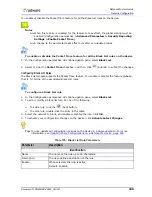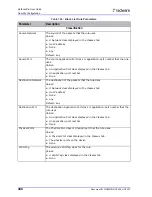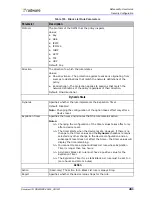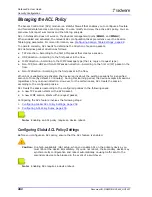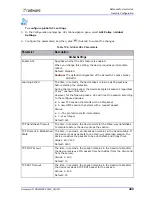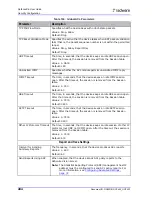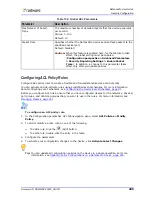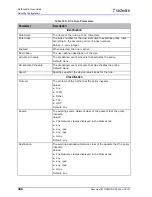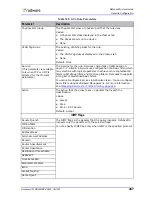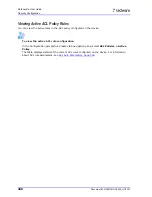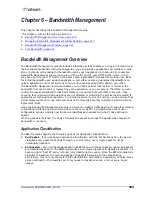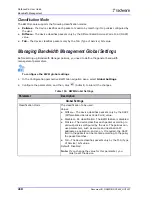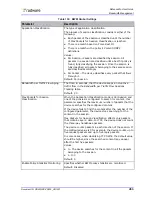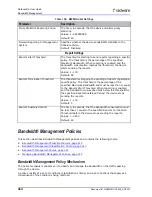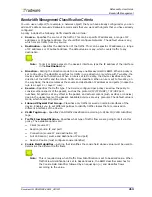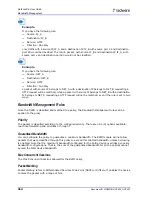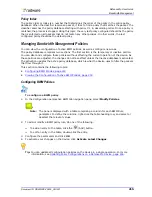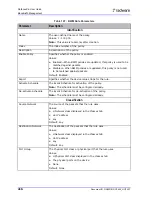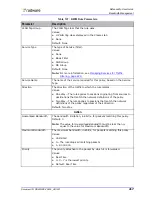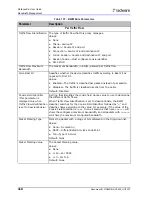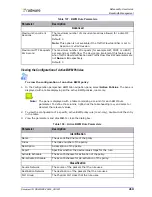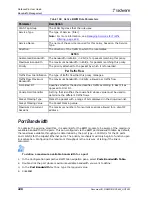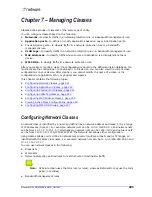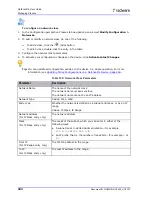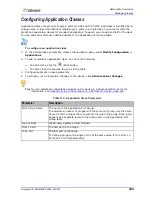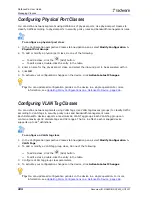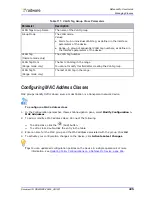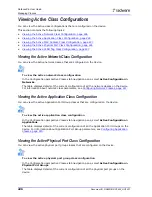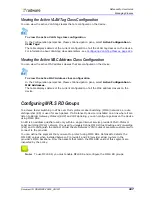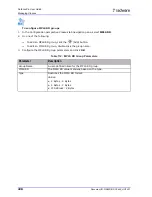
DefensePro User Guide
Bandwidth Management
Document ID: RDWR-DP-V0602_UG1201
213
Bandwidth Management Classification Criteria
You can use an object (for example, a network object) that you have already configured or you can
add an IP address manually. Radware recommends that you work with objects that you have already
configured.
A policy includes the following traffic classification criteria:
•
Source—Specifies the source of the traffic. This can be specific IP addresses, a range of IP
addresses or IP Subnet address. You should first configure Networks. The default value is any,
which covers traffic from any source.
•
Destination—Specifies the destination of the traffic. This can be specific IP addresses, a range
of IP addresses or IP Subnet address. The default value is any, which covers traffic to any
destination.
Note:
To limit or block access to the device’s interface, type the IP address of the interface
in the Destination box.
•
Direction—Setting the direction mode to one way enables asymmetric BWM. When a policy is
set to One Way, the classifier searches for traffic in one direction only, while with Two Way, the
device searches both directions. When a rule is set to One Way, the device classifies only one
direction of the traffic and the return traffic is not classified. When a rule is set to Two Way, on
the way back, the device replaces the source and destination IP addresses and ports (in case the
rule is a Layer 4 or Layer 7 rule).
•
Service—Specifies the traffic type. The Service configured per policy can allow the policy to
consider other aspects of the packet, such as the protocol (IP/TCP/UDP), TCP/UDP port
numbers, bit patterns at any offset in the packet, and actual content (such as URLs or cookies)
deep in the upper layers of the packet. Available Services are very granular. The default value is
None, which covers all protocols.
•
Inbound Physical Port Group—Classifies only traffic received on certain interfaces of the
device. Enables you to set different policies to identify traffic classes that are received on
different interfaces of the device.
•
VLAN Tag Group—Specifies VLAN traffic classification according to VLAN ID (VLAN Identifier)
tags.
•
Traffic Flow Identification—Specifies what type of traffic flow we are going to limit via this
policy. The available options are:
—
Client (source IP)
—
Session (source IP and port)
—
Connection (source IP and destination IP)
—
Full L4 Session (source and destination IP and port)
—
Session Cookie (must configure cookie identifier)
•
Cookie Field Identifier—A string that identifies the cookie field whose value must be used to
determine the different traffic flows.
Note:
This is required only when Traffic Flow Identification is set to SessionCookie. When
Traffic Flow Identification is set to SessionCookie, the BWM classifier searches for
the Cookie Field Identifier followed by an equal sign (=) and classifies flows
according to the value.
Summary of Contents for DefensePro 6.02
Page 1: ...DefensePro User Guide Software Version 6 02 Document ID RDWR DP V0602_UG1201 January 2012 ...
Page 2: ...DefensePro User Guide 2 Document ID RDWR DP V0602_UG1201 ...
Page 20: ...DefensePro User Guide 20 Document ID RDWR DP V0602_UG1201 ...
Page 28: ...DefensePro User Guide Table of Contents 28 Document ID RDWR DP V0602_UG1201 ...
Page 116: ...DefensePro User Guide Device Network Configuration 116 Document ID RDWR DP V0602_UG1201 ...
Page 302: ...DefensePro User Guide Real Time Security Reporting 302 Document ID RDWR DP V0602_UG1201 ...
Page 308: ...DefensePro User Guide Administering DefensePro 308 Document ID RDWR DP V0602_UG1201 ...
Page 324: ...DefensePro User Guide Troubleshooting 324 Document ID RDWR DP V0602_UG1201 ...

